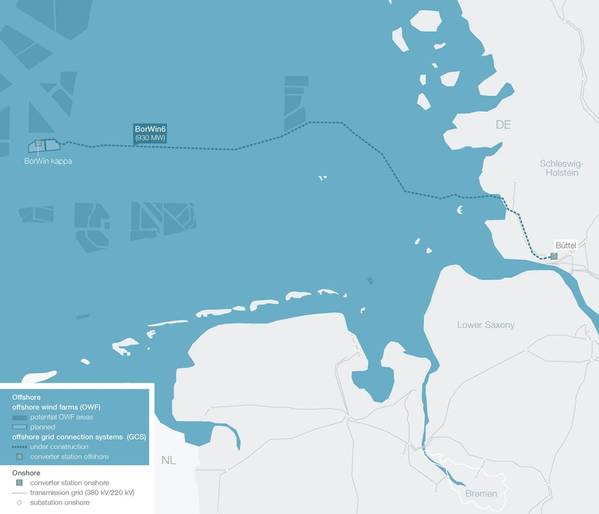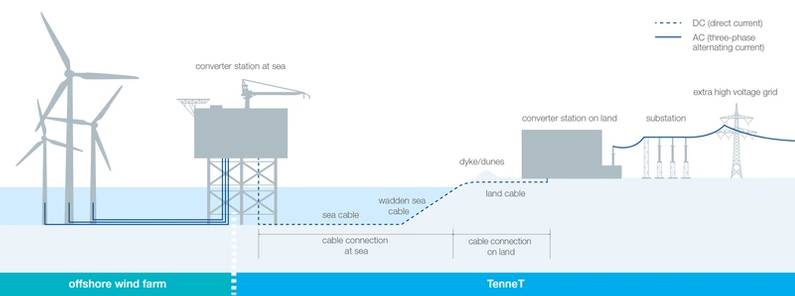
Dutch/German grid operator TenneT said Wednedsay that in the tendering process for the award of the contract to build the 235-kilometre-long offshore grid connection system BorWin6, has now also awarded the contract for cable pro-duction and laying.
Nexans will be the contractor for the sea, tidal flat and land cables. This means that the important contracts for the construction of the BorWin6 grid connection have been awarded, TenneT said.
TenneT had already commissioned the converter stations at sea and on land in February.
"We have a long and trusting partnership with Nexans, which guarantees us reliability and quality at the same time," said Tim Meyerjürgens, COO of TenneT. BorWin6 is the last grid connection project in the German North Sea to be realised by TenneT before the technologi-cal leap to two gigawatts and 525-kilovolt cables.
Various direct current cables with 320 kilovolts will be used in the project. Among other things, about 400 kilometres of cables with copper conductors, which have a diameter of up to about 14 centimetres, will be produced for laying at sea, including reserve cables. They weigh about 47 kilogrammes per metre. On land, cables with an aluminium conductor are also used, which weigh 16 kilograms per metre with a diameter of 12.5 centimetres. In sections of about 1,400 metres, these will then be connected to each other with sleeves. The laying work is scheduled to start in 2025, TenneT said. Credit: TenneT
Credit: TenneT
Two cable strings will be laid for the grid connection, one positive and one negative pole, as well as an additional fibre optic cable, which will later be important for controlling the system.
The offshore wind turbines are connected directly to the BorWin kappa offshore platform via innovative 66-kilovolt three-phase cables. This eliminates the need for the transformer stations that were previously required in each wind farm and the 155 kV three-phase cables that were previously used to connect to TenneT's offshore platform.
Using the extra-high voltage direct current cable, which is 235 kilometres long in total, TenneT transmits the electricity to the converter station in Büttel (Schleswig-Holstein) on land after conversion using low-loss direct current technology. Here, the direct current is converted back into three-phase current and fed into the extra-high voltage grid.



